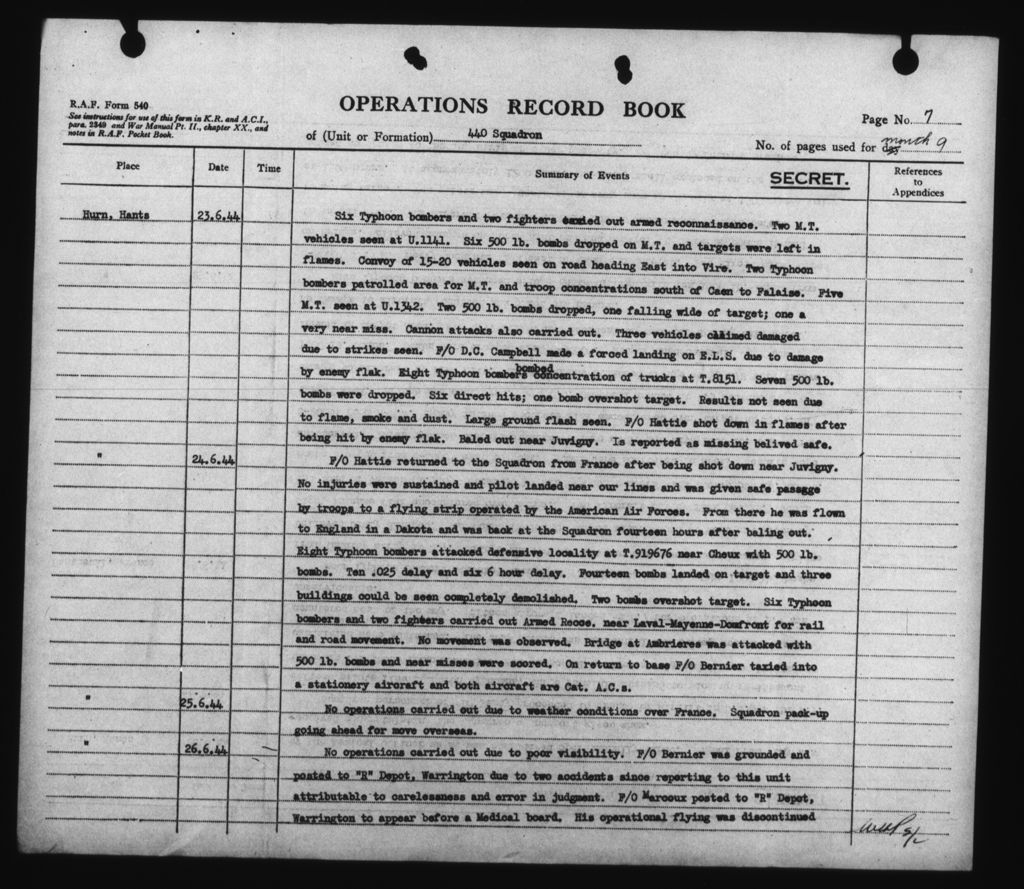
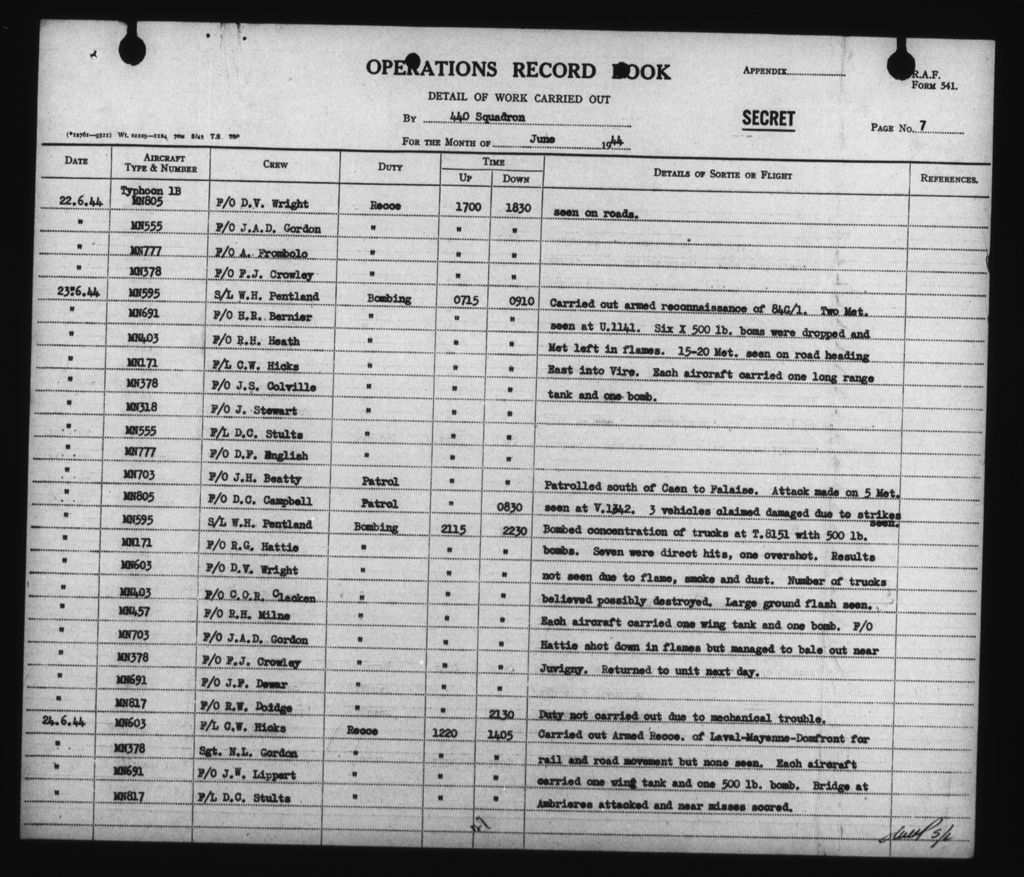
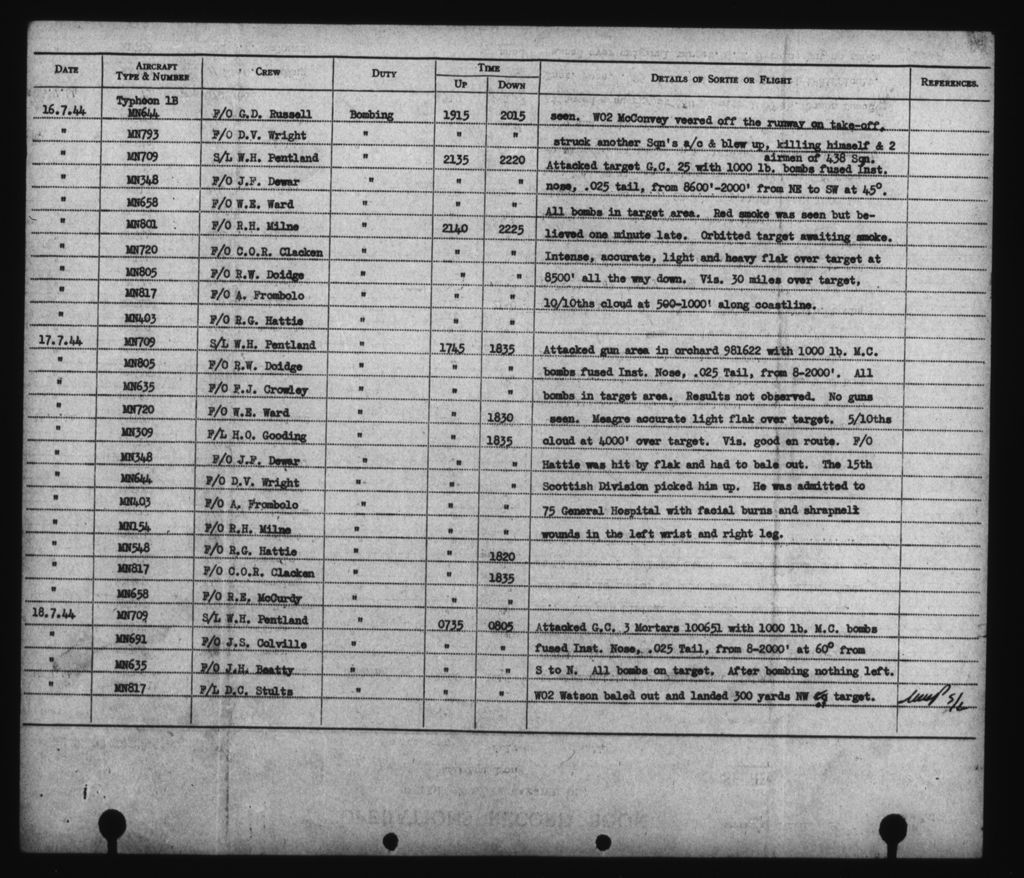
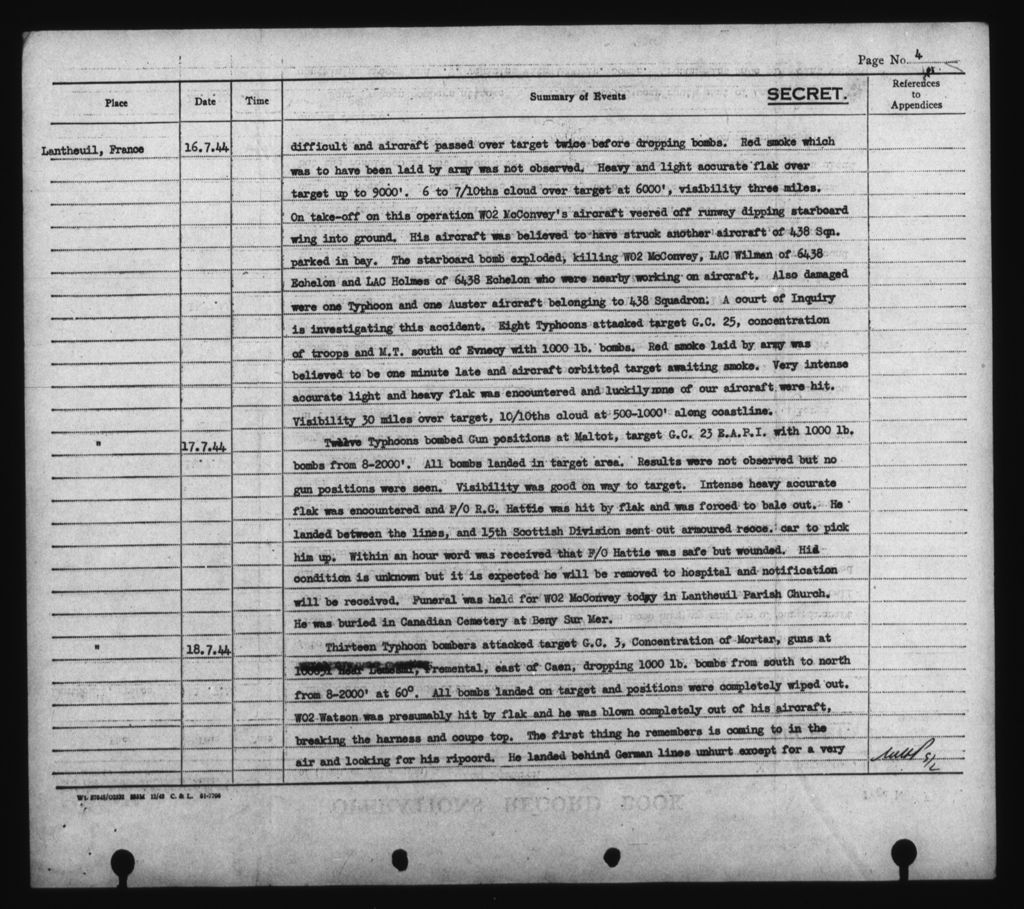
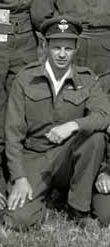
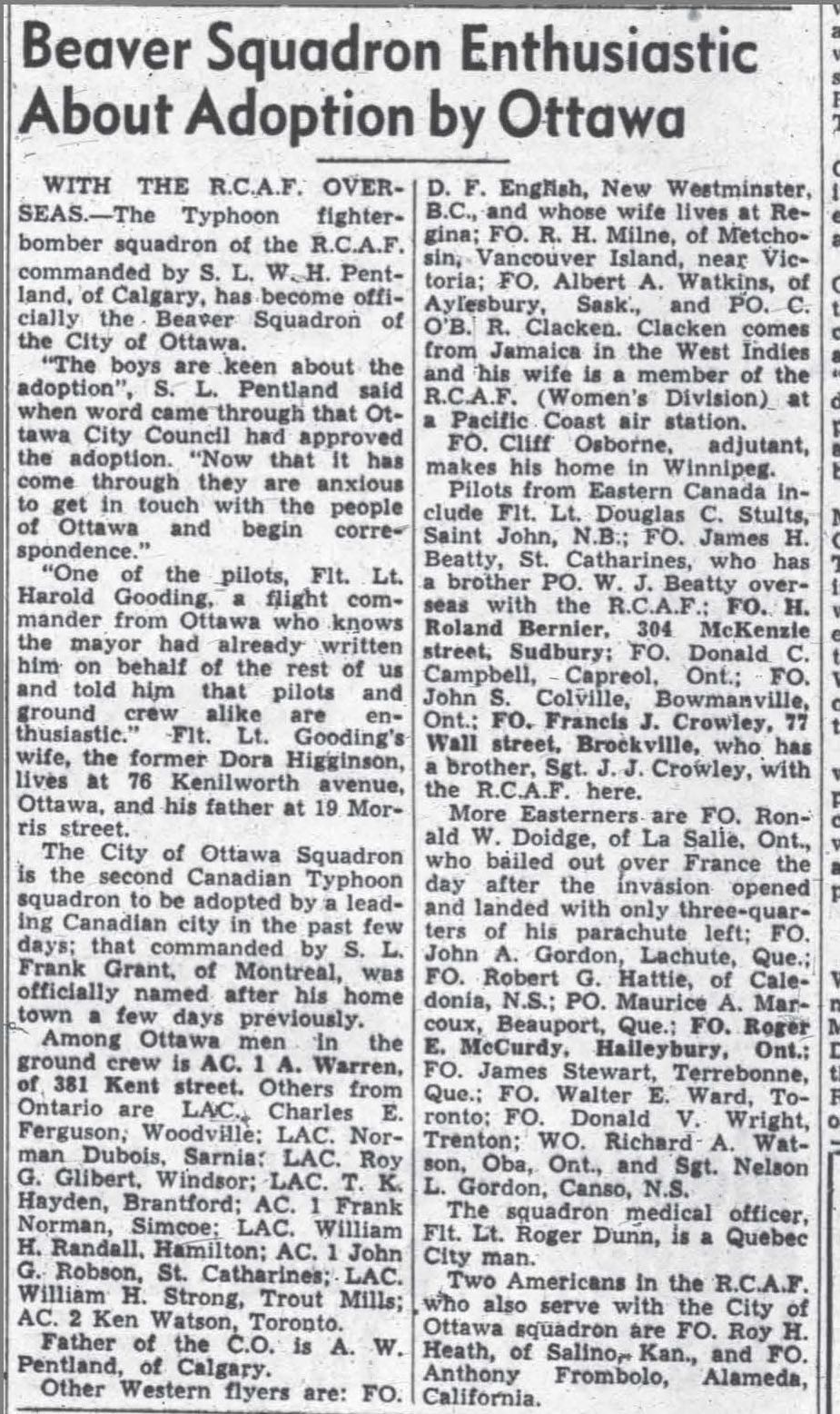
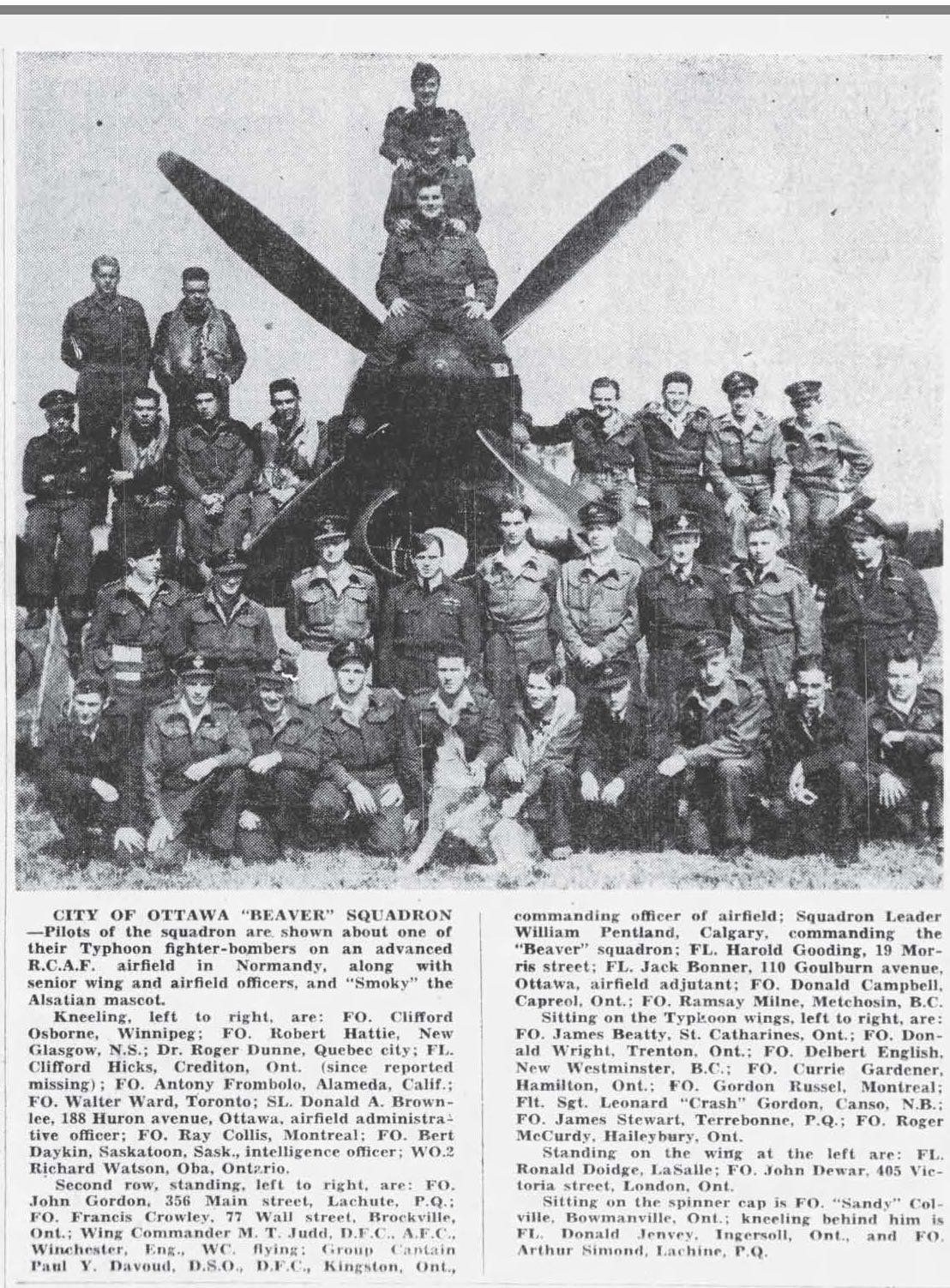
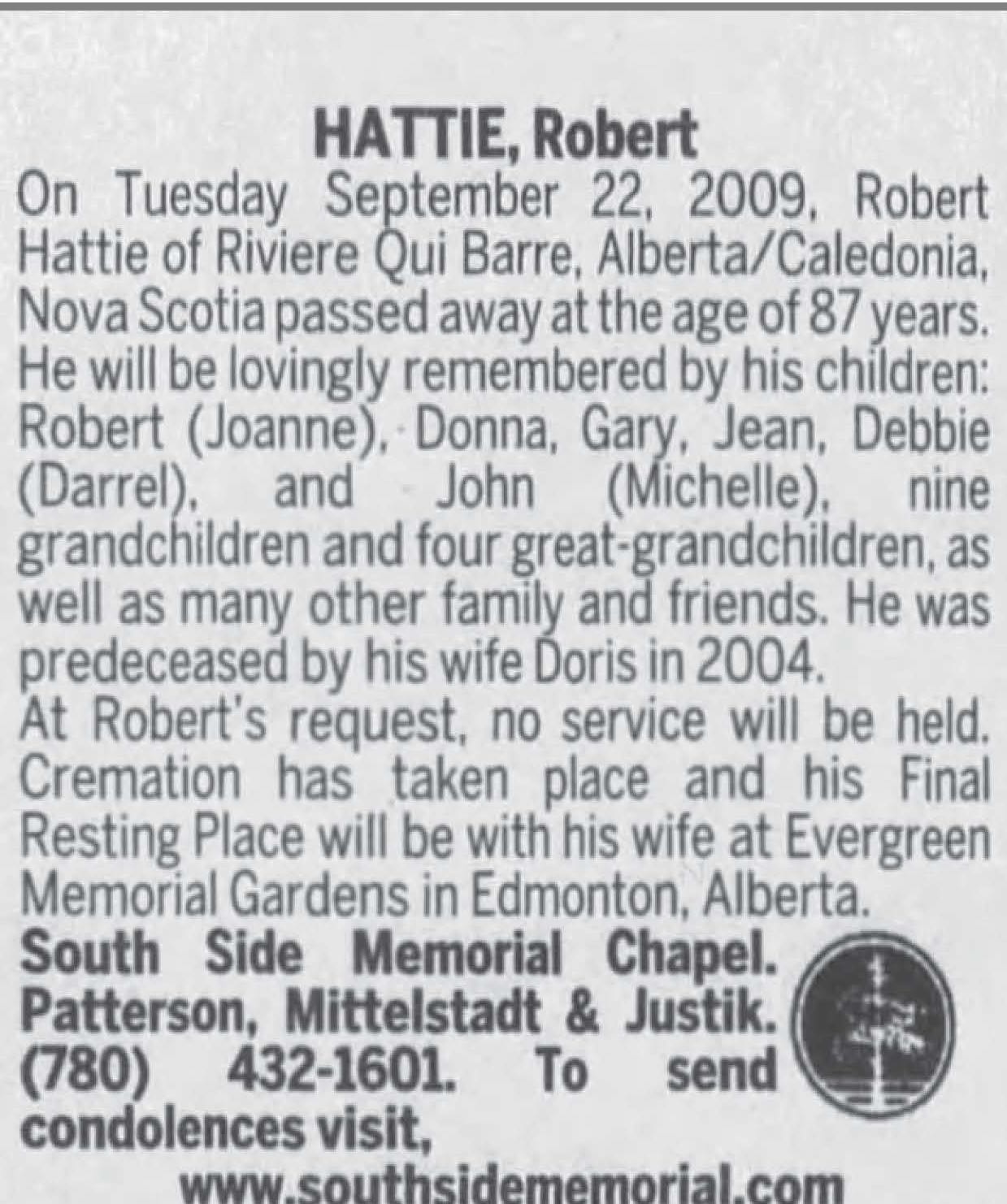
1922 (Approximate) - September 22, 2009








Robert G. Hattie was a pilot with 440 Squadron during the Second World War. He flew MN171 and was shot down by flak near Juvigny on June 23, 1944. Bob Hattie was able to bail out and return to his unit. He did not sustain any injuries; he landed near the Allied lines and was given a safe passage by troops to a flying strip operated by the American Air Forces. From there, he was flown to England in a Dakota and was back at the squadron within 14 hours of being shot down.
R104240 – Sgt – F/Sgt – WO2. Commissioned on 11 September 1943.
In a press release dated June 28, 1944, his experience was noted.
Officer Robert G. Hattie of Halifax and Caledonia, Nova Scotia was back in England and on the way to rejoin his squadron within 12 hours of bailing out of his flaming Typhoon inside Allied lines in Normandy.
The Maritimer, who flies in an RCAF Typhoon fighter bomber squadron commanded by Squadron Leader Bill Pentland of Calgary was on a dive-bombing operation against heavily defended railway marshaling yard at Aunay-sur-Odon far behind the German lines.
'Those railway yards are one of the hottest flat areas anywhere behind the German front,' Squadron Leader Pentland said. 'There was just a carpet of those white puffs of bursting flak at about 5000 feet.'
His machine was hit in one wing as he dived, and glycol and petrol started to stream out. He managed to get his bombs away at the target and turned for home. He lost altitude quickly as he approached the front line and as he crossed into Allied territory, the Typhoon burst into flames. Hattie bailed out at about 2000 feet, landing just inside friendly territory to find that his bass address had been scorched by the flames before he left the cockpit.
Discarding his parachute, he dashed for an opening in the hedge surrounding the field, still unsure whose territory he was in. As he made his way for the hedge, an American soldier stepped out in front of him with a Tommy gun and Hattie stopped running. In a few moments he convinced the soldier he was a Canadian pilot and the American directed him to an airfield where he found a plane leaving for England.
Hattie again bailed, this time flying Typhoon MN715 with facial burns and shrapnel wounds, according to Hugh Halliday in Typhoon and Tempest on July 17, 1944. He was picked up by the 15th Scottish Division and hospitalized. He was repatriated by August 18, 1944.